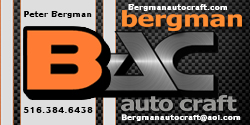My 67 Plymouth Off-white (very off) GTX was painted in single stage by the previous owner 25-30 years ago. Unfortunately I think as far as small dings go, he was the Ray Charles of home body work. On top of that I managed to chip the edge of the door and the front cowl panel some years ago when rebuilding the hinges. It chipped enough that by the time I sanded, primed, sanded, sprayed with one of about 6 cans of touch up paint I bought (used the closest match) it went back about an inch into both panels. After sanding and buffing it was not bad from a distance but I saw it every time I walked by the car. So I finally took a hood scoop down to our O’Reilly’s paint store where a really great guy helps us with all our paint projects. He tried one match but when I sprayed it out it the tone was off. So he worked about a week on a second match and everything looked promising. It had the correct gray tone in the white but when color sanded and buffed it looked very slightly darker and the usual halo around the spotting in was all too apparent.
So looking into bending reducers and other approaches I stumbled on this U-POL #9 blendiing reducer and watched some Y-tube videos on it and it looked like it might help with at least getting rid of the halo and a better finish. Plus it’s inexpensive.

So, I lightly feathered out another coat of the SS over the repair, let it cure and tack’ed it and sprayed 3 light coats of this over the area, covering all overspray. This small area I just used an air brush as even my detail gun would be overkill on it. It is thin and can run or sag easily if put on too thick (which I did) so I had to sand those out and apply a thinner coat over the top. I sanded it out, compounded it and polished it out today and the paint repair is completely invisible to my eye. There is no visible color or tone shift that I can detect at all. Of course the usual leaded joint crack is still there.

 That white card stuck in the door is a piece of photo paper where I dabbed samples of the paint on trying to see if a little variance in the anoint of reducer might have any effect (wasted effort). It shows just how off white this color was back then as it’s very close to areas of the original paint in the door jambs etc.
That white card stuck in the door is a piece of photo paper where I dabbed samples of the paint on trying to see if a little variance in the anoint of reducer might have any effect (wasted effort). It shows just how off white this color was back then as it’s very close to areas of the original paint in the door jambs etc.
This product does seem to greatly help with blending in small repairs in an existing hardened (urethane) paint job. It works for BC/CC and Single Stage. Pretty sure it won’t work on lacquer (but shouldn’t be needed for that) or straight enamel as the solvents are strong and will lift and wrinkle the paint.
I’ve been toying with repainting this car for years but the lack of spray booths for rent around here has been a problem and paying someone else to do it was not the way I like to do things. So now I think I’m going to fix some of the small dings they should have fixed when it was repainted and spot the paint in using the U-POL 9 and drive it.
Thought this might be of interest to some.
So looking into bending reducers and other approaches I stumbled on this U-POL #9 blendiing reducer and watched some Y-tube videos on it and it looked like it might help with at least getting rid of the halo and a better finish. Plus it’s inexpensive.
So, I lightly feathered out another coat of the SS over the repair, let it cure and tack’ed it and sprayed 3 light coats of this over the area, covering all overspray. This small area I just used an air brush as even my detail gun would be overkill on it. It is thin and can run or sag easily if put on too thick (which I did) so I had to sand those out and apply a thinner coat over the top. I sanded it out, compounded it and polished it out today and the paint repair is completely invisible to my eye. There is no visible color or tone shift that I can detect at all. Of course the usual leaded joint crack is still there.
This product does seem to greatly help with blending in small repairs in an existing hardened (urethane) paint job. It works for BC/CC and Single Stage. Pretty sure it won’t work on lacquer (but shouldn’t be needed for that) or straight enamel as the solvents are strong and will lift and wrinkle the paint.
I’ve been toying with repainting this car for years but the lack of spray booths for rent around here has been a problem and paying someone else to do it was not the way I like to do things. So now I think I’m going to fix some of the small dings they should have fixed when it was repainted and spot the paint in using the U-POL 9 and drive it.
Thought this might be of interest to some.















